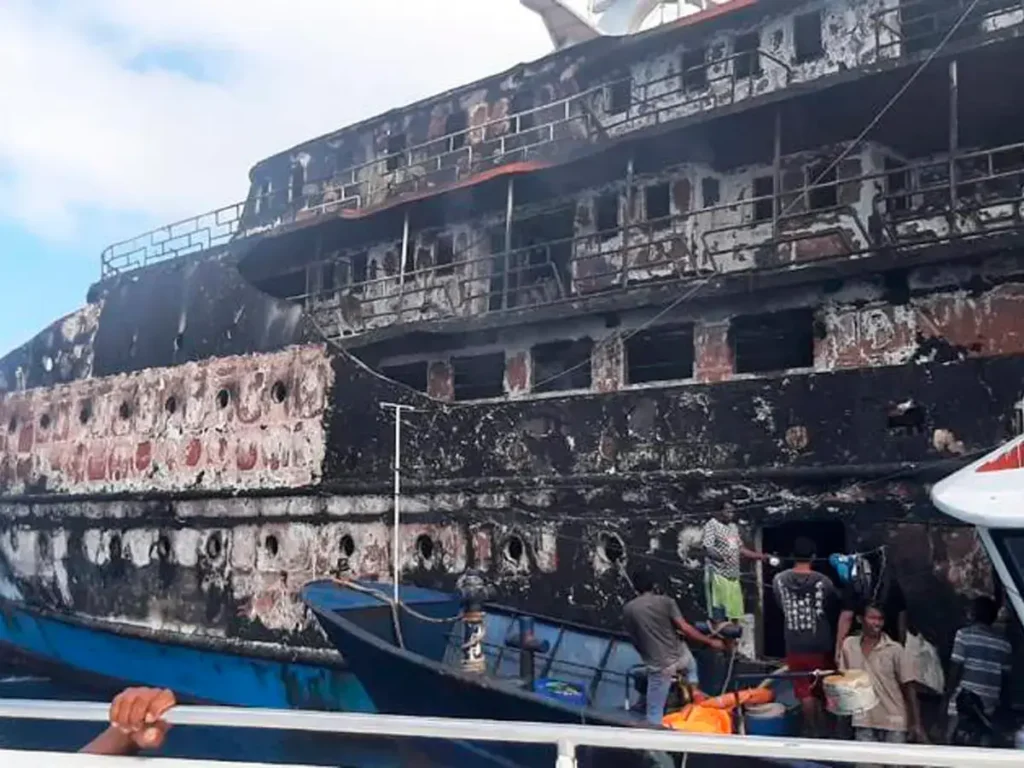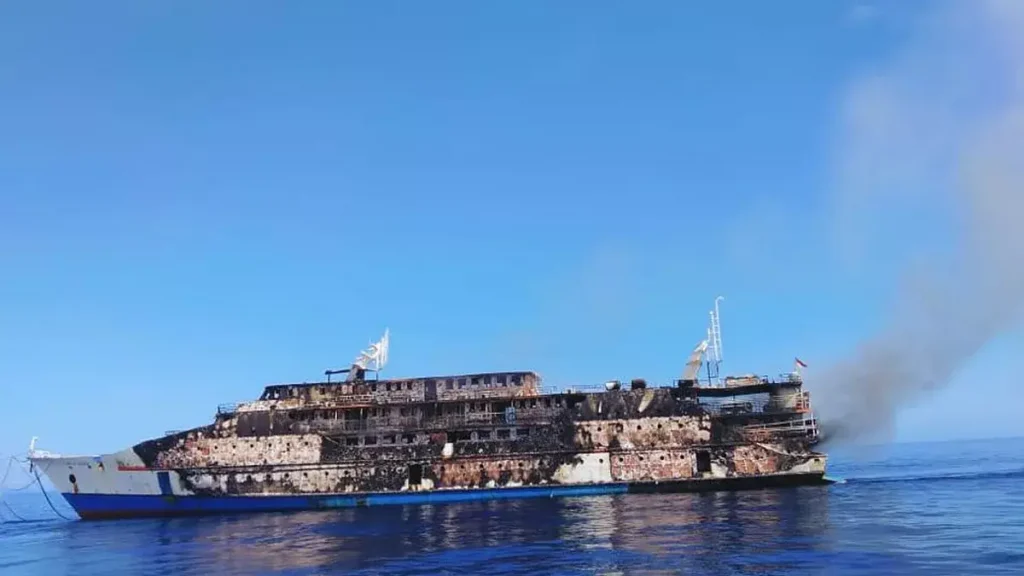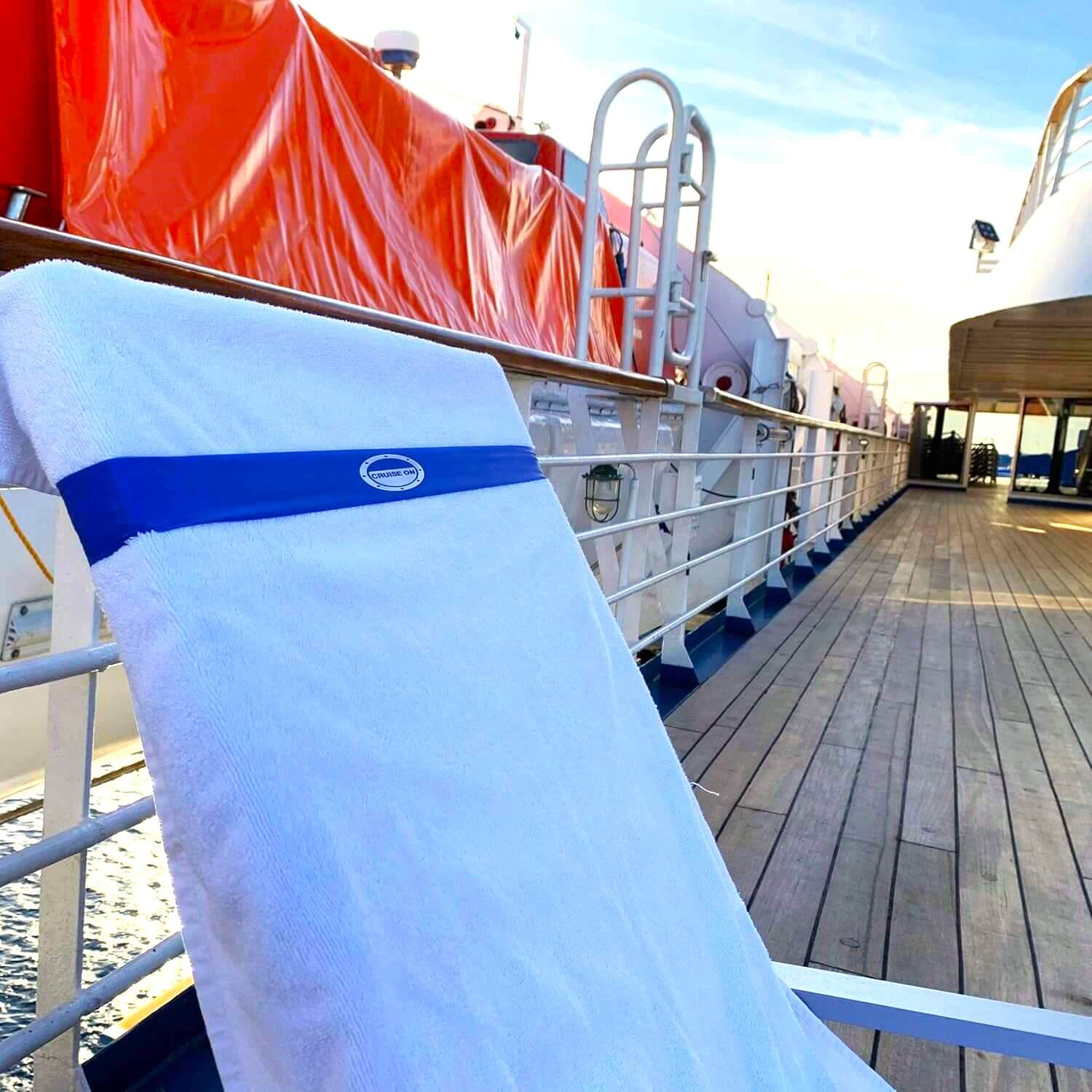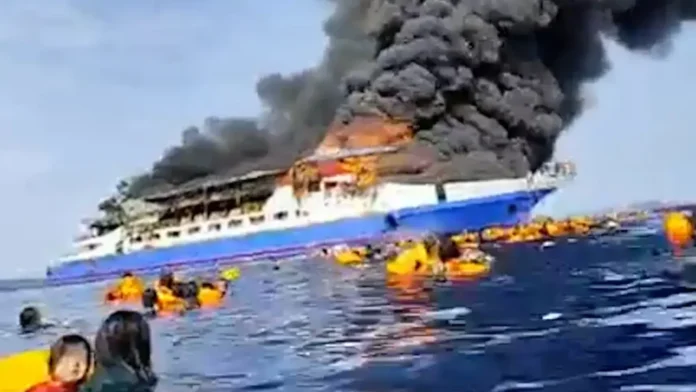If you’ve been following my blog for a while, you’ll know I’ve spent years trying to raise awareness about just how dangerous fire can be at sea.
It’s one of the worst emergencies that can happen on a ship, and yet, I still see people lighting up on their balconies, even though it’s absolutely forbidden.
Sadly, it seems some lessons still haven’t been learned.
Despite the many tragedies that have happened over the years, these accidents keep happening and just recently, there was another heartbreaking example.
Ferry Catches Fire in Indonesia
On Sunday, July 20, 2025, a large passenger ferry called KM Barcelona 5 caught fire off the coast of North Sulawesi, Indonesia.
The vessel was on a routine half-day trip from Melonguane (in the Talaud Islands) to the provincial capital, Manado, when flames suddenly broke out near the rear of the ship.
It was around midday, and as often happens in such cases, the fire spread fast.
From the terrifying scenes that followed (I’ll post some pictures below), you can see passengers panicking, some already wearing life jackets, others jumping into the sea just to escape the smoke and flames.
A massive rescue operation was quickly launched. The Indonesian coast guard rushed in with a patrol ship, six rescue boats, and several inflatable rafts. Local fishermen also joined the efforts, bravely pulling people out of the water.
Thankfully, the fire was brought under control within about an hour. But the damage was already done.
Rescue and Casualties

More than 560 people were rescued. But tragically, three lives were lost and among them there was also a pregnant woman.
Two others are still missing, and search teams are continuing to look for them.
At first, the ship’s records listed around 280 passengers and 15 crew. But officials later confirmed that the real number onboard was far higher.
Unfortunately, this kind of underreporting isn’t unusual in Indonesia and it makes rescue efforts even more difficult and dangerous.
The exact cause of the fire hasn’t been determined yet, but early reports suggest it started in the rear of the vessel. Luckily, it was contained before it could spread across the entire ship.
In a public statement, Indonesia’s search and rescue agency praised the quick thinking of the crew and the brave local community. Without their fast response, this tragedy could have been far, far worse.
Why Fire Prevention Is Crucial at Sea

Fire is one of the most dangerous emergencies on a ship, even more so than on land, for several reasons.
The first reason is the limited escape routes. Of course, you’re on a ship, so you cannot simply flee outside.
For this reason, a fire can trap people on board very quickly, and the smoke that fills corridors and decks makes it even harder to see and breathe.
This makes it absolutely critical to prevent fires and catch them as early as possible. As I always say, if you are on the ship and you see smoke or a burning smell, immediately alert the crew members.
Another thing to consider is that ships carry fuel and other flammable materials, which can easily feed a fire.
A fire that reaches the engine room or a car deck, for example, can become uncontrollable in a short time.
Lastly, when a ship is out at sea, help from firefighters or emergency services may be far away.
The crew usually has to handle the fire on their own with onboard equipment until rescuers can reach the scene.
If they cannot control it, the situation can turn dire, and sometimes leave the crew no choice but to radio a mayday distress call and abandon ship to save lives.
Unfortunately, one thing I often notice is that many people feel safe because cruise ships or ferries are surrounded by water.
Always remember that being surrounded by water doesn’t make a ship fire any less dangerous; on the contrary, it means everyone must rely on the ship’s own safety systems and crew training.
What to Do If a Fire Breaks Out Onboard

Although shipboard fires can be frightening, following a few rules can help you better manage the situation and avoid serious accidents.
Firstly, stay calm and follow crew instructions. I know it’s not easy not to panic is such situations but trust the crew.
They are trained to handle emergencies, so listen carefully to announcements or orders and do as instructed.
If you’re in a cabin, grab your life jacket (usually provided in cabins or under seats) and put it on as taught in the safety drill. If you’re on deck, life jackets are stored in marked lockers or under benches.
Also rememebr that ships have designated assembly points (muster stations) for emergencies. As soon as an alarm sounds or if told to evacuate, head to the nearest muster station or as directed by the crew.
Proceed in an orderly way and avoid running or pushing.
You should also avoid smoke by stay low and by covering your nose/mouth. You should never use elevators and should never return back for your belongings.
You can also have a look at the 13 Code Words You Never Want to Hear on a Cruise Ship.
CRUISE ESSENTIALS 2025

We earn a commission if you make a purchase, at no additional cost to you.
OUR PICK

We earn a commission if you make a purchase, at no additional cost to you.
SUPER USEFUL

We earn a commission if you make a purchase, at no additional cost to you.
